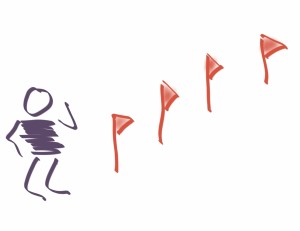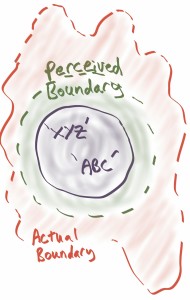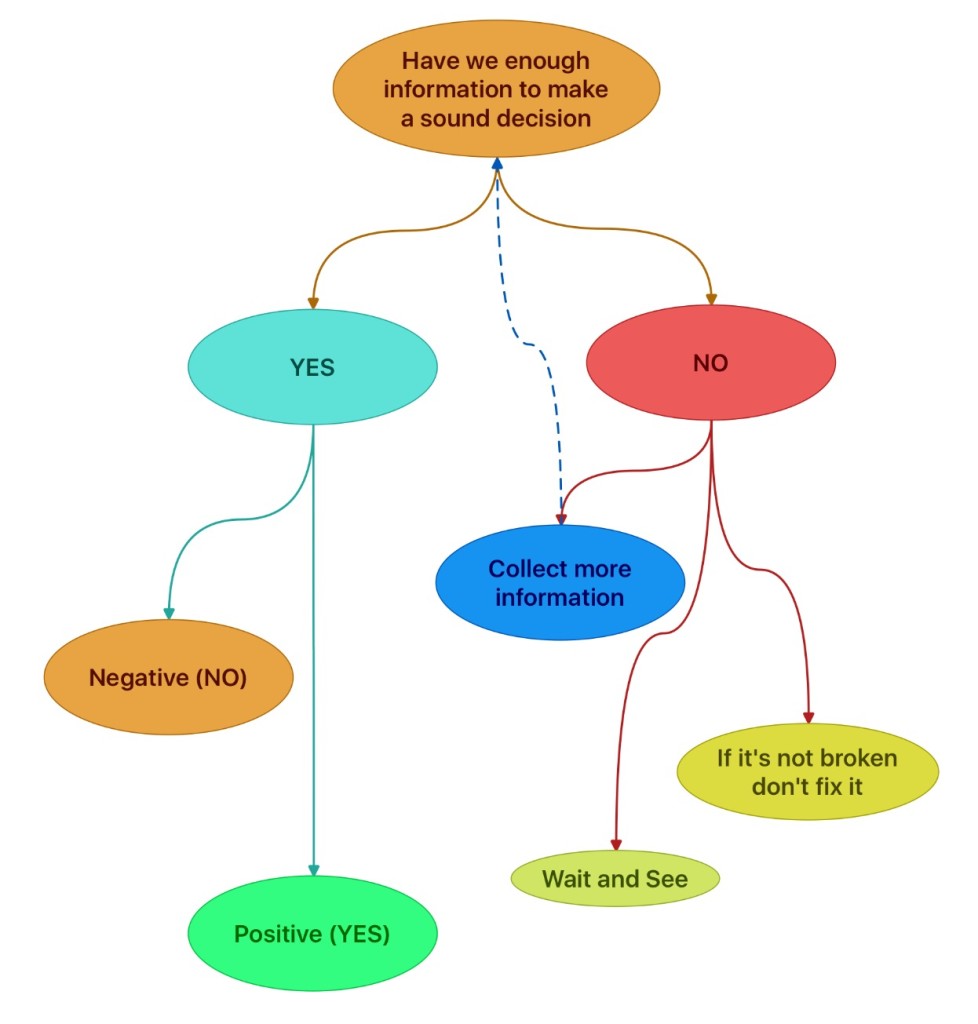The whole idea of modern management can be distilled down to a single basic goal to maximise profit, the methods in which a company or business pursues this most basic goal can vary substantially, focusing upon different areas such as efficiency, staff satisfaction, R&D (Research and Development) and the list goes on.
For the purpose of this discussion the method chosen to achieve the basic goal of profit, is irrelevant.
I want to focus on a method of decision making that we are all familiar with, yet underutilise in our work lives. The process is that of game play and in particular the games of Yahtzee and Poker. The simple fact is that in our management we forget that there are not only outcomes but multiple outcomes from any given situation. These actual outcomes may or may not be desirable but they are equally valid regardless.
The reason I’ve chosen these two games to highlight my point is that although both games are games of chance, they are also games of skill, relying upon probable outcomes of particular desired patterns.
The game of Yahtzee is based upon poker with dice, the general game play is a simplified and modified poker variant. Yahtzee does not allow for the ability to bluff as in Poker which makes it less human but more instructive for my example.
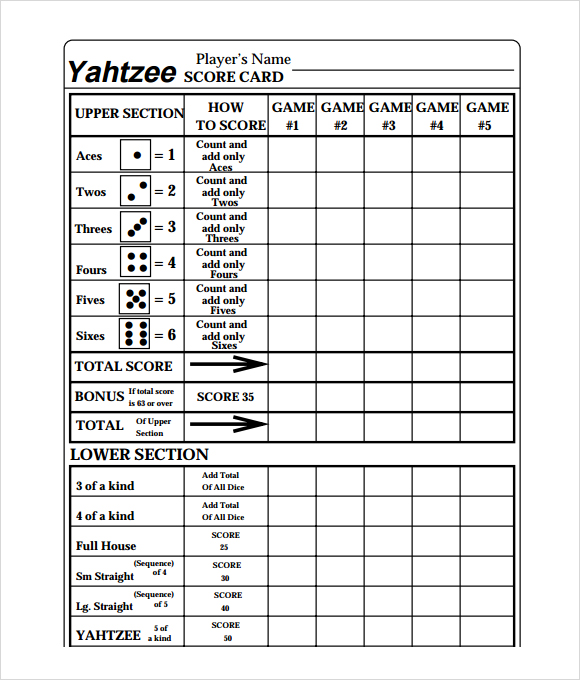 As you can see from the Yahtzee score card to maximise your score every box (category) must be filled with the highest possible score. This is where the management part comes in because when you get say three or four of a kind you need to allocate that roll of the dice, for the highest yield. You have to decide if the three 6’s you just rolled should be scored as either a three of a kind or three 6’s. The fact that three 6’s is the highest three of a kind possible is going to bias your decision, in this case, so you place them in the three of a kind category but if they were 4’s instead. Three 4’s is a good score for either category, and it depends where you are in the course of a game. You begin to see the point?
As you can see from the Yahtzee score card to maximise your score every box (category) must be filled with the highest possible score. This is where the management part comes in because when you get say three or four of a kind you need to allocate that roll of the dice, for the highest yield. You have to decide if the three 6’s you just rolled should be scored as either a three of a kind or three 6’s. The fact that three 6’s is the highest three of a kind possible is going to bias your decision, in this case, so you place them in the three of a kind category but if they were 4’s instead. Three 4’s is a good score for either category, and it depends where you are in the course of a game. You begin to see the point?
There are definite probabilities for each potential outcome and obviously the more difficult, lower probability, ones are the highest rewarding. However, if we focus on only getting the highest possible score for each scoring outcome we soon find ourselves in a losing situation. Each roll of the dice must be recorded and accounted for so aiming solely for Yahtzee (5 of a kind) will result in poor scores because that blind focus will mean other options will be ignored.
So what has this got to do with management, well projects can be considered outcomes just like a hand of cards or a roll of the dice in Yahtzee.
When we ask for a piece of work we expect to get it, yet in the real world we rarely get what we expect and in fact may not get it on time or at all. The delivery may be postponed because a part of the work has not been completed, requirements change over time. This can happen quite often and is one of the reasons we do risk analyses. Yet if we remove the original expectations, we may realise we have created a very worthwhile component which would not be delivered because it is not the expected/requested whole but could fit into and/or compliment another project. Just like in Yahtzee holding onto the original expectations may lead to a reduction in movement towards our goals.
When we manage we tend to focus upon expected outcomes and unexpected or below expected outcomes are disregarded or thrown out.
Both Poker and Yahtzee also share the fact that the initial hand or roll can then be cherry picked and tailored to achieve the best outcome available with what was given. Then the parts not suitable for the newly scoped goal are discarded and re-drawn or cast. This happens three times in Yahtzee and one, two or three times in Poker depending on how many draws are allowed.
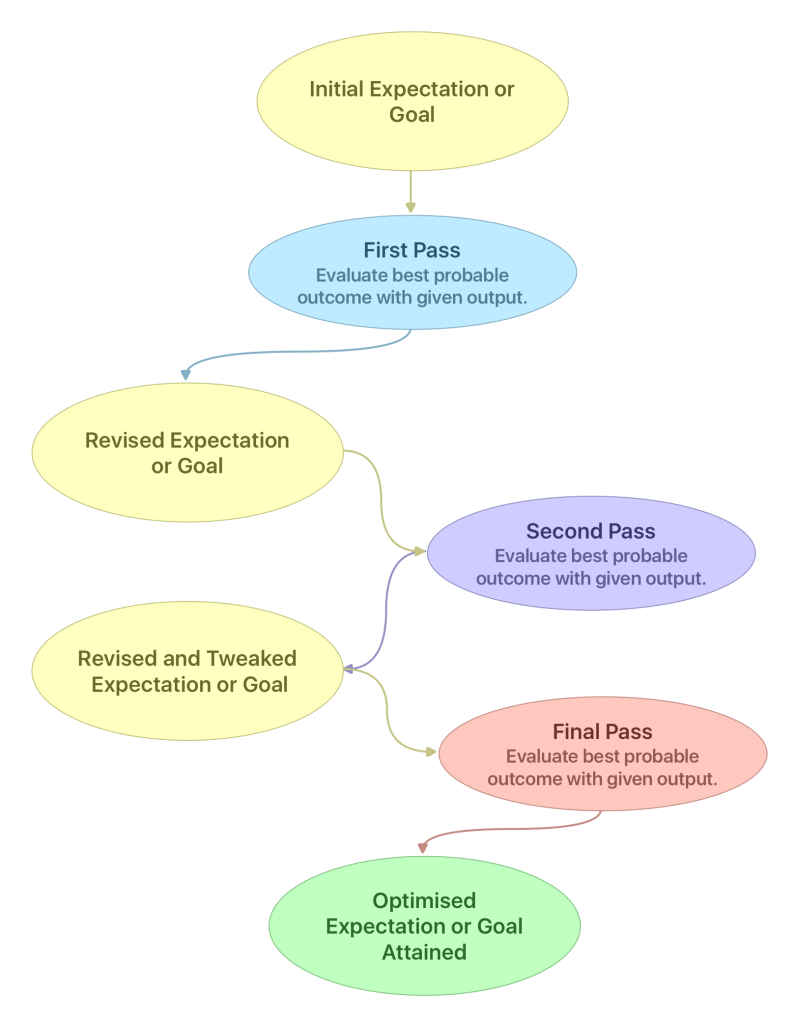 The simple fact is that maybe the three 1’s are better scored in the one’s category rather than the three of a kind box. The old make lemonade when life gives you lemons approach. We rarely get what we expect, so if we are open to see the possible benefits of a given outcome disregarding our expectations then maybe we will have more wins.
The simple fact is that maybe the three 1’s are better scored in the one’s category rather than the three of a kind box. The old make lemonade when life gives you lemons approach. We rarely get what we expect, so if we are open to see the possible benefits of a given outcome disregarding our expectations then maybe we will have more wins.
I suggest that we use the mind set of reiteration and liquid goals as seen in Yahtzee and Poker as a possible management methodology, examining components and maximising their utilisation.

